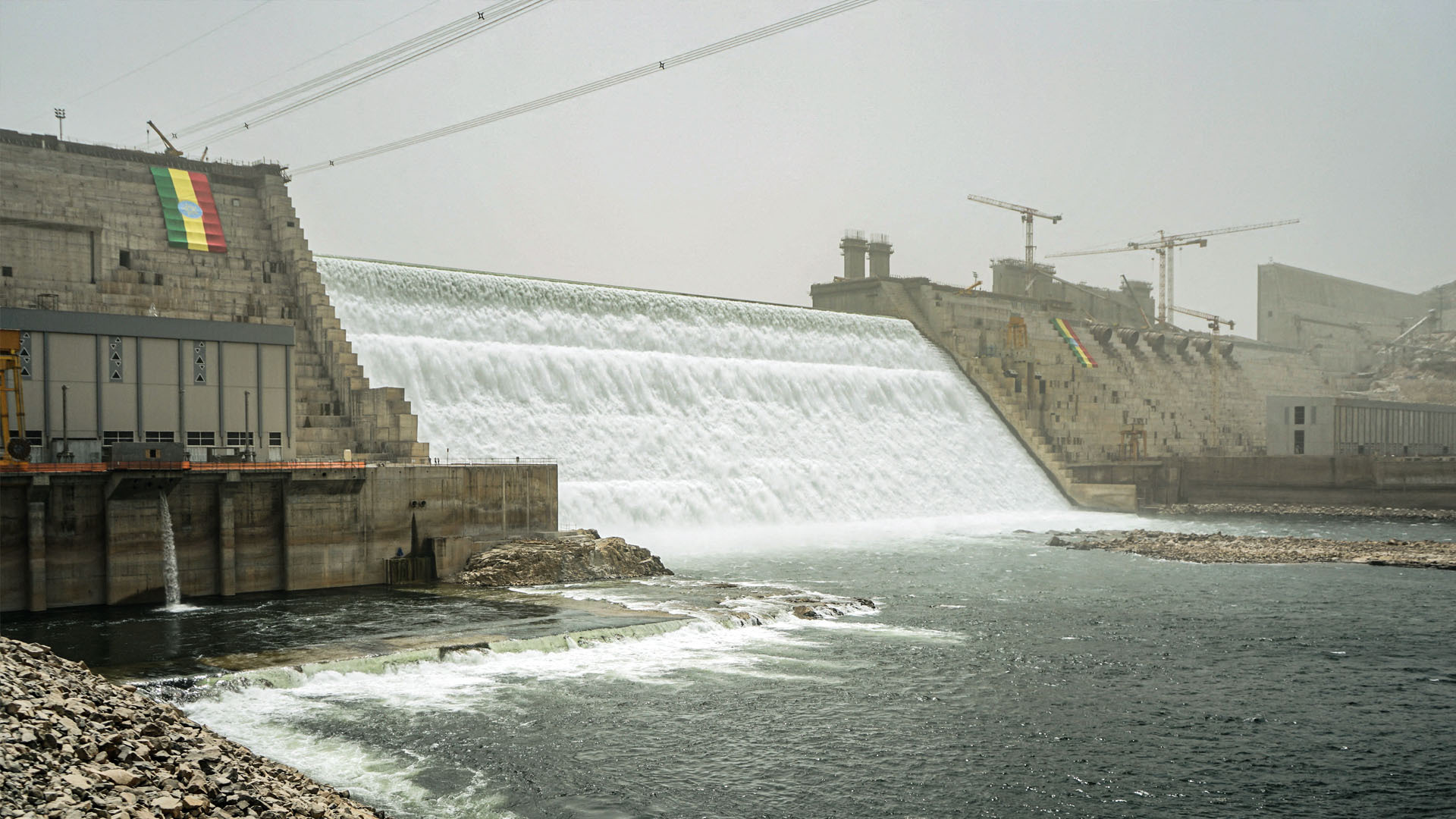Ethiopia began building the Renaissance Dam project on the Blue Nile near the Sudanese border in 2011, causing regional tensions with Sudan and Egypt, which depend on 90% of the river's water to meet their irrigation and drinking needs.
Location
The dam is located on the Blue Nile in the state of Benishangul, northwest of Ethiopia, and is about 30 kilometers from the Sudanese border.
The Nile River
The length of the Nile River is about 7,000 km, and it is the longest river in the world, and it is a vital and important source of water resources and hydroelectric power.
It covers an area of 3 million square kilometers, and constitutes 10% of the area of the African continent, and passes through 10 countries: Burundi, the Democratic Republic of the Congo, Egypt, Ethiopia, Kenya and Uganda, in addition to Rwanda, Sudan, South Sudan and Tanzania.
The annual flow level of the river is estimated at 84 billion cubic metres.
The Blue Nile originates in Ethiopia, and the White Nile comes from Lake Victoria, and they meet in Khartoum where they form the Nile River, which crosses Sudan and Egypt and finally flows into the Mediterranean.
Data on the Renaissance Dam
It is also called the "Great Millennium Dam", its value is about 4 billion dollars, and the Italian company "Salny" commissioned the task of building it, and the Ethiopian government funded it completely.
It is the largest hydroelectric dam in Africa, and the tenth in the world.
Its capacity exceeds five thousand megawatts, and contains 15 units of electricity production, each with a capacity of 350 megawatts.
Its length is 1,800 km, its height is 145 meters, and its maximum capacity is 74 billion cubic meters.
Ethiopia started its first mobilization phase in 2020, and began producing energy from it in February 2022.
Highlights
Ethiopia says that the dam will benefit Sudan by controlling the floods that affect it, especially at the Roseires Dam, and by storing the silt of the Blue Nile, which will extend the life of the Sudanese dams and the High Dam.
Egypt considers the dam project an "existential" threat, fearing that filling it in a short time will reduce the flow of the Nile's water flow.
Egypt and Sudan expressed fears that the dam would lose a large amount of water amounting to about 25 billion cubic meters, in addition to the fact that the lack of water storage behind the High Dam will negatively affect - according to water experts - on the electric power generated by it by between 20% and 40%. .
The problem of this dam lies in the period of time required to fill its reservoir, which will need large quantities of Blue Nile waters reaching Sudan and then Egypt. Therefore, it is expected that the two countries’ share of the Nile flow will significantly decrease during that period.
Experts believe that Cairo and Khartoum will push towards legalizing the period of filling the tank, and making it not less than 15 years under the supervision of experts from both countries, as well as stopping the filling process if the level falls below the general average.
For its part, Ethiopia says that it is keen not to harm Egypt's water interests, and stresses that the Renaissance Dam will not affect Egypt's share of the Nile water, according to studies that have been conducted, but that Egypt can benefit from the large electric power that the dam will produce.
Egypt maintains its right to the waters of the Nile based on a series of agreements concluded since 1929, Egypt obtained the right to build any project on the river.
In 1959, Egypt obtained 66% of the annual flow of the Nile, compared to 22% for Sudan.
In 2010, the Nile Basin countries, with the exception of Egypt and Sudan, signed an agreement stipulating the abolition of the right enjoyed by Egypt, and allowed the establishment of irrigation projects and dams to produce electricity.
On March 23, 2015, the leaders of Egypt, Ethiopia and Sudan signed a document of principles on the Renaissance Dam, following high-level diplomatic efforts to overcome points of contention.
Under the document, Egypt recognizes Ethiopia's right to build the dam in return for Addis Ababa's pledges to participate in Cairo's management.
The agreement paves the way for resolving the Egyptian-Ethiopian dispute over the dam, by developing mechanisms for cooperation and consultation.
filling dam
On July 22, 2020, Ethiopian Prime Minister Abiy Ahmed announced the completion of the first phase of filling the Renaissance Dam.
He described this first stage of filling the reservoir as "historic."
Ethiopia carried out the second filling in July 2021, amid Egyptian-Sudanese rejection as "unilateral measures".
In February 2022, Abe announced the start of electric power production in the dam and the operation of the first turbine of the power station.
On August 12, 2022, Addis Ababa announced the successful completion of the third filling process of the Renaissance Dam, and also announced the operation of a second turbine to generate electric power with a capacity of 375 megawatts, bringing the amount of power generation to 750 megawatts.

